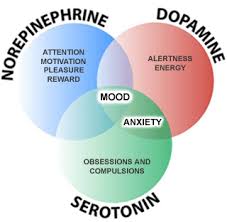Remember the carnival game “Whac-a-Mole”? Moles would pop up through a hole and the object of the game was to force individual moles back into their hole with a mallet.  The goal is to make them disappear as fast as possible when they rear their heads. Addiction interaction is like the “Whac-a-mole” game.
The goal is to make them disappear as fast as possible when they rear their heads. Addiction interaction is like the “Whac-a-mole” game.
I had my chemical addiction credentials for over a decade before receiving my Certified Sex Addiction Therapist (CSAT) credentials. For years I noticed the phenomenon as one would get sober from alcohol or drugs, other behaviors might begin to creep in as problematic or new focus in an unhealthy, unbalanced, way. I would see clients cease drinking and begin shopping to excess, or beyond one’s means. Men would stop drinking, but with new renewed clarity and focus, begin work to excess. This work drive would become a detriment to family obligations and life balance. Even more, I would notice within marriages where addiction had been present, one spouse would shop to excess and the other spouse would feel like they were obligated to keep up with the debt forcing unhealthy work escalations in response.
Sometimes comfort eating would replace the numbing of alcohol. Often with sex addiction sobriety, we see this interaction begin to take place. Often, increased food or sugar consumption begins in an attempt to mood regulate.  Food companies have long known about the “trifecta sweet spot” of the right amounts of sugar, salt, and fat to release optimal dopamine hits in the brain.
Food companies have long known about the “trifecta sweet spot” of the right amounts of sugar, salt, and fat to release optimal dopamine hits in the brain.
In August 2012 the American for Society for Addiction Medicine released a new document defining addiction from a 4-year study involving more than 80 experts in neurology and addiction. They defined addictions as a chronic neurological disorder involving many brain functions most notably an imbalance in the so-called reward circuitry. This fundamental impairment in the experience of pleasure literally compels the addict to chase the chemical highs produced by substances like drugs and alcohol and obsessive behaviors like sex, food and gambling. The new definition leaves no doubt that all addictions whether to alcohol, heroin or sex are fundamentally the same.
So what does this mean for the addict and treatment? Sometimes people have more than one active addiction. Sometimes they stop one behavior and another problematic behavior does surface in a compulsive way. Effective treatment must include assessment and treatment for all active addictions and one must be vigilant for other addictive risks.
CSAT’s are uniquely trained to understand, assess and treat the addiction interaction. Addiction interaction is like switching tracks, so to speak, to continue to avoid uncomfortable feelings. These addictive risks include, alcohol, drugs, spending, debting, sex, shopping, e-trading, video gaming, gambling, impression management, even problematic feelings, and codependent relationships.





 Bringing my mind to the present gave me presence of mind. Just for this week I am on task. Just until the leaf and the crack in the asphalt, I can do this. What a gift!
Bringing my mind to the present gave me presence of mind. Just for this week I am on task. Just until the leaf and the crack in the asphalt, I can do this. What a gift!
 Addiction creates etched pathways that make going to the drug, or process, an automatic in times of high stress. The job of recovery is to create new habits which circumvent those old etched addictive pathways in the brain. The goal of recovery is to create new re-wired habits in the brain that keep one safe and stable consistently over time.
Addiction creates etched pathways that make going to the drug, or process, an automatic in times of high stress. The job of recovery is to create new habits which circumvent those old etched addictive pathways in the brain. The goal of recovery is to create new re-wired habits in the brain that keep one safe and stable consistently over time.